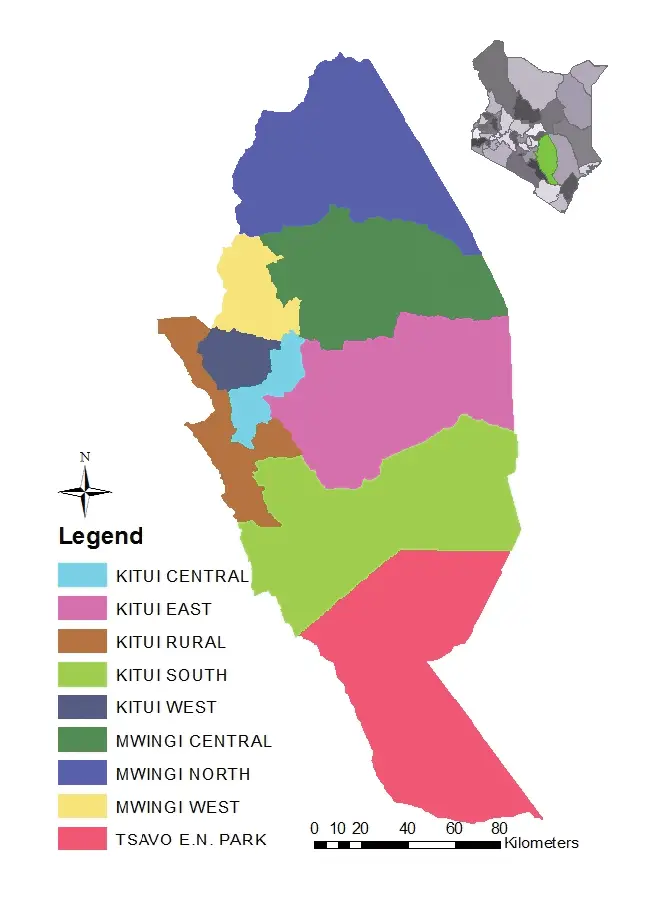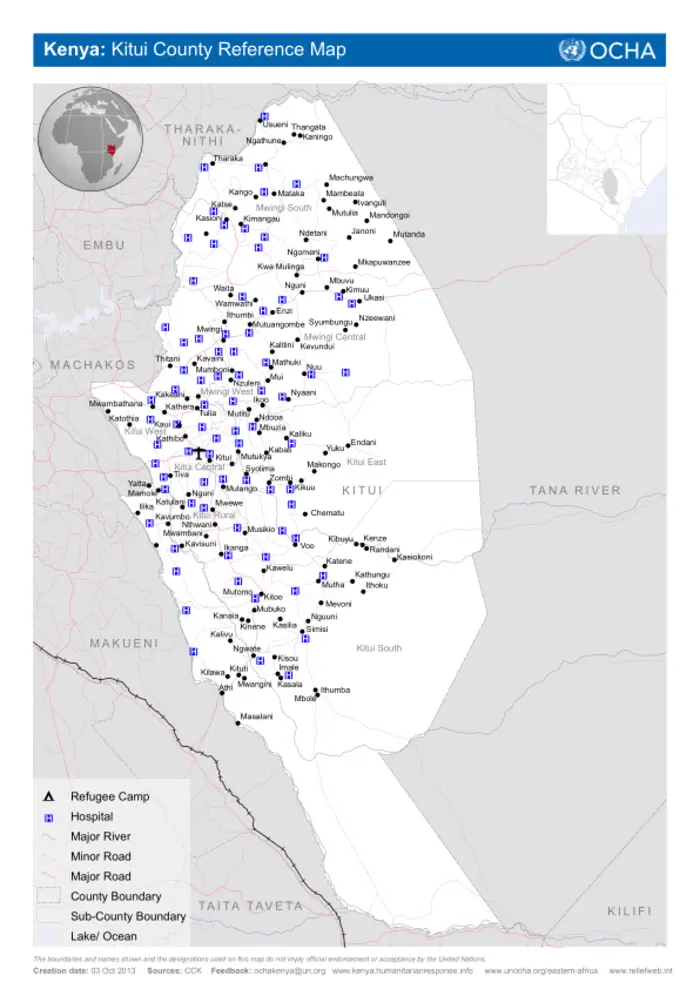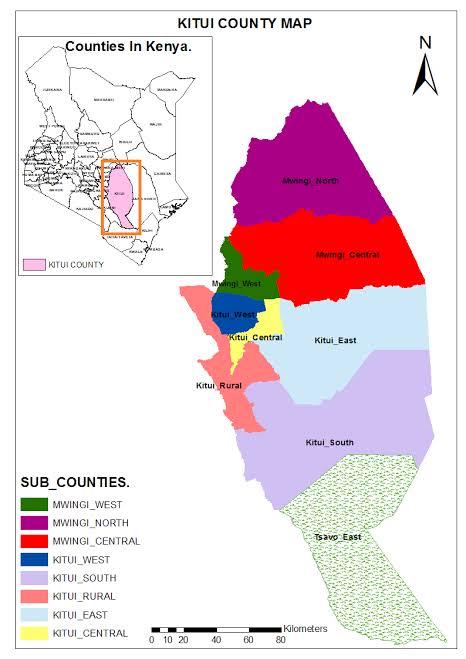Located in the eastern part of Kenya, Kitui County is a charming destination that offers a plethora of natural wonders, cultural treasures, and vibrant communities. From the breathtaking landscapes of Tsavo East National Park to the historical intrigue of Kitui Museum, this county has something for everyone. Whether you’re seeking adventure, a glimpse into local traditions, or simply a peaceful escape, Kitui County is bound to exceed your expectations. So pack your bags and get ready to explore the hidden gems of this beautiful corner of Kenya.

This image is property of kitui.go.ke.
Geography
Location
Kitui County is located in the eastern part of Kenya, bordered by Tana River County to the east, Machakos County to the south, Taita-Taveta County to the southeast, and Tharaka-Nithi County to the northeast. It covers an area of approximately 30,496 square kilometers, making it one of the largest counties in Kenya.
Topography
Kitui County is characterized by diverse topography. It is primarily a semi-arid area with undulating plains, hills, and valleys. The famous Yatta Plateau, which is one of the world’s longest lava flows, stretches through the county. The county also features rivers and seasonal streams, such as the Kiambere Dam and the Athi River, which provide water for both domestic and agricultural use.
Climate
The climate in Kitui County is classified as semi-arid, with temperatures ranging between 20 to 30 degrees Celsius. The county experiences two main rainy seasons, the long rains from March to May and the short rains from October to December. However, rainfall is unreliable and intermittent, leading to frequent droughts. The county has been affected by the effects of climate change, which have had a significant impact on the agriculture-dependent economy.
History
Early settlements
Kitui County has a rich history dating back to pre-colonial times. The region was inhabited by various Bantu-speaking communities, including the Akamba people, who are the predominant ethnic group in the area. These communities relied on farming and livestock rearing as their primary sources of livelihood. Traditional practices and customs were deeply embedded in their way of life.
Colonial era
During the colonial era, Kitui County, like the rest of Kenya, was under British rule. The region witnessed resistance by the local communities against the oppressive colonial administration. The Mbatiany Massacre, which occurred in 1953, remains a significant historical event in the county. It marked a turning point in the struggle for independence and galvanized the people’s desire for self-rule.
Post-independence
Following Kenya’s independence in 1963, Kitui County emerged as a key political and administrative center. It played a crucial role in shaping the early days of the nation, with notable political figures emerging from the region. However, the county, like many others in Kenya, has faced numerous challenges in its journey towards development and self-sustainability.

This image is property of elimufeynman.s3.amazonaws.com.
Government and Politics
Administrative divisions
Kitui County is divided into eight administrative sub-counties, namely Kitui Central, Kitui Rural, Kitui West, Kitui East, Mwingi Central, Mwingi North, Mwingi West, and Mwingi South. These divisions serve as local governance units and are headed by sub-county administrators.
County government structure
The county government of Kitui is led by a governor who is elected by the residents for a five-year term. The governor is responsible for the overall governance and development of the county. The county government is further structured into various departments and ministries, each headed by a county executive committee member.
Political representation
Kitui County is represented in the national government through elected members of parliament in the National Assembly and senators in the Senate. These political representatives play a vital role in advocating for the interests of the county at the national level. The county also has elected members of the county assembly who represent the various wards within the county.
Economy
Agriculture
Agriculture is a significant economic activity in Kitui County, employing a large percentage of the population. The county has fertile soils suitable for growing a variety of crops, including maize, beans, millet, sorghum, and vegetables. However, the unreliable rainfall patterns and frequent droughts have had a negative impact on agricultural productivity.
Livestock farming
Livestock farming is another crucial component of the county’s economy. The county is known for its large herds of cattle, goats, and sheep. These animals provide a source of income and sustenance for many households. Livestock products such as milk, meat, and hides and skins are also traded locally and regionally.
Mining
Kitui County is rich in mineral resources, including limestone, gypsum, iron ore, and coal. The county government has been exploring ways to exploit these resources sustainably to boost the local economy. Efforts have been made to attract investors and develop the necessary infrastructure to support mining operations.
Tourism
Kitui County boasts a variety of tourist attractions that draw visitors from far and wide. The Mwingi National Reserve offers breathtaking views of wildlife, including elephants, zebras, giraffes, and various bird species. Tsavo East National Park, one of Kenya’s largest national parks, lies partly within Kitui County and is renowned for its diverse wildlife and scenic landscapes. The Kitui Museum showcases the county’s rich cultural heritage, while the unique rock formations in the area are a sight to behold.

This image is property of reliefweb.int.
Infrastructure
Roads
Kitui County has an extensive road network that connects various towns and villages within the county and links them to other parts of Kenya. The county government, in collaboration with the national government, has been investing in road infrastructure to improve connectivity and facilitate the transportation of goods and services.
Electricity
Access to electricity has been improved in Kitui County, with efforts to connect more households to the national grid. The county government has also been exploring renewable energy sources, such as solar and wind, to provide clean and sustainable power to the residents.
Water supply
A reliable water supply is crucial for agriculture and domestic use. Kitui County has been working towards improving water infrastructure by constructing dams, boreholes, and water pans. These initiatives aim to increase water availability and reduce the community’s reliance on unreliable rainfall.
Healthcare
The county government has made substantial investments in healthcare infrastructure and services. The county boasts several health facilities, including hospitals, health centers, and dispensaries, which provide essential healthcare services to the residents. Efforts have also been made to train and deploy healthcare workers to serve in the county.
Education
Education is a key priority for Kitui County. The county government has been focused on improving access to quality education by constructing schools, hiring more teachers, and providing scholarships and bursaries to needy students. This has led to increased enrollment and improved educational outcomes in the county.
Culture and Social Life
Traditional customs and practices
Kitui County is rich in cultural heritage, with the majority of its residents belonging to the Akamba ethnic group. The Akamba people have a distinct cultural identity, characterized by traditional customs, practices, and rituals that have been passed down through generations. These customs include dance, music, storytelling, and artistic craftsmanship.
Ethnic groups
While the Akamba ethnic group is the largest in Kitui County, the region is also home to other ethnic communities, including the Kamba, Kikuyu, and Luhya, among others. These diverse ethnic groups contribute to the vibrant cultural tapestry of the county and foster social cohesion and integration.
Festivals and celebrations
Kitui County celebrates various festivals and cultural events throughout the year. One of the most notable festivals is the Kitui Tourism and Cultural Festival, which showcases the county’s cultural heritage through music, dance, and traditional ceremonies. Other celebrations include harvest festivals, initiation ceremonies, and religious festivities.

This image is property of bizhack.co.ke.
Tourist Attractions
Mwingi National Reserve
Mwingi National Reserve is a must-visit destination for nature lovers and wildlife enthusiasts. The reserve offers a unique opportunity to spot diverse wildlife, including elephants, zebras, giraffes, and various bird species. Visitors can enjoy game drives, guided nature walks, and bird watching in this pristine natural habitat.
Tsavo East National Park
Tsavo East National Park is one of Kenya’s largest national parks and lies partly within Kitui County. It is a haven for wildlife, with a vast array of animals, including lions, elephants, buffalos, and hippos. The park’s diverse landscapes, which range from savannah plains to volcanic hills, make it a photographer’s paradise.
Kitui Museum
Kitui Museum is a treasure trove of artifacts and exhibits that showcase the rich cultural heritage of the county. The museum features traditional crafts, musical instruments, traditional attire, and archaeological artifacts that provide insight into the history and traditions of the Akamba people.
Rock formations
Kitui County is known for its unique rock formations, which are a testament to the area’s geological history. The popular Ikutha Rock and Nzambani Rock are must-visit sites, offering panoramic views of the surrounding landscapes and providing a stunning backdrop for photography enthusiasts.
Notable People
Sports personalities
Kitui County has produced several sports personalities who have made their mark at the national and international levels. These include athletes, footballers, and volleyball players who have excelled in their respective sports and brought glory to the county.
Political figures
The county has been home to notable political figures who have played significant roles in shaping Kenya’s political landscape. These individuals have held influential positions in the national government and have advocated for the interests of the county and its people.
Artists and musicians
Kitui County is a hub of talented artists and musicians who have made significant contributions to Kenyan art and music. These individuals have used their creative talents to promote the county’s cultural heritage and entertain audiences nationwide.

This image is property of opencounty.org.
Challenges and Future Development
Drought and food security
Kitui County has been grappling with the challenges of frequent droughts and unreliable rainfall. This has adversely affected agricultural productivity and food security in the region. The county government, in collaboration with national agencies and development partners, has been implementing strategies to mitigate the effects of drought and improve food security through irrigation and water harvesting projects.
Unemployment
Unemployment remains a significant challenge in Kitui County, particularly among the youth. The county government has been focusing on promoting entrepreneurship and providing vocational training to equip young people with skills that will enable them to create their own employment opportunities.
Infrastructure development plans
To spur economic growth and improve the living standards of its residents, Kitui County has developed comprehensive infrastructure development plans. These plans include the construction of roads, establishment of industrial parks, and improvement of water and electricity infrastructure. The county government is working towards attracting private investment and partnering with development agencies to fund and implement these infrastructure projects.
Conclusion
Kitui County is a diverse and unique region with a rich cultural heritage and natural beauty. From its semi-arid landscapes and rock formations to its vibrant cultural festivals and wildlife reserves, the county offers a wealth of experiences for visitors. While it faces challenges such as drought and unemployment, the county government’s proactive approach and development plans give hope for a brighter future. Through investments in infrastructure, agriculture, tourism, and education, Kitui County is well on its way to becoming a thriving and prosperous region.


